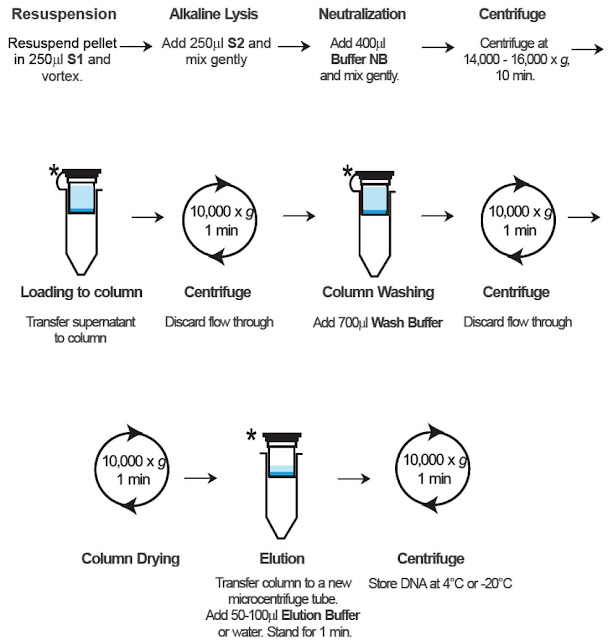Lab 3: Preparation and sterilization of culture.
Introduction
A growth medium or culture medium is a liquid or gel designed to support the growth of microorganisms or cells, or small plants like the moss Physcomitrella patens. There are different types of media for growing different types of cells.
There are two major types of growth media: those used for cell culture, which use specific cell types derived from plants or animals, and microbiological culture, which are used for growing microorganisms, such as bacteria or yeast
 |
Figure 1 An agar plate with microorganisms isolated from a deep-water sponge |
This is an undefined medium because the amino acid source contains a variety of compounds with the exact composition being unknown. Nutrient media contain all the elements that most bacteria need for growth and are non-selective, so they are used for the general cultivation and maintenance of bacteria kept in laboratory culture collections.
Physcomitrella patens plants growingaxenically on agar plates (Petri dish, 9 cm diameter).
An undefined medium (also known as a basal or complex medium) is a medium that contains:
1. a carbon source such as glucose for bacterial growth
2. water
3. various salts needed for bacterial growth
4. Defined media (also known as chemically defined media or
synthetic media)
5. all the chemicals used are known does not contain any yeast,
animal or plant tissue.
6. Differential medium
7. some sort of indicator, typically a dye, is added, that allows for the
differentiation of particular chemical reactions occurring during growth.
 |
Figure 2 Physcomitrella patens plants growing axenically in vitro on agar plates (Petri dish, 9cm diameter)
|
An autoclave is a device used to sterilize equipment and supplies by subjecting them to high pressure saturated steam at 121 °C or more, typically for 15–20 minutes depending on the size of the load and the contents. It was invented by Charles Chamberland in 1879, although a precursor known as thesteam digester was created by Denis Papin in 1679. The name comes from Greek auto-, ultimately meaning self, and Latin clavis meaning key — a self-locking device.
Condition: 134 °C for 3 minutes or 121 °C for 15 minutes
 |
Figure 3 Autoclave in our lab |
 |
Figure 4 Control panel for the autoclave |
Discussion
Preparation:
1. Nutrient Agar 250ml
2. Sterile Water 100ml
3. Sterile Beaker (1 bottle = 250ml)
4. 1 ml & 5 ml Pipette tips (1 box each)
5. Double Strengh MRS broth 100ml
6. Peptone 250ml
7. Universal bottles + paper (1 bottle + 10 pieces of paper disk)
8. Forcep 1
9. TSA Agar (A) 200ml
10. BHI Agar (B) 200ml
11. Centrifuge Tubes (C) (15 ml x 30)
12. Sterile universal bottle (D) 30 bottles
13. MRS broth (E) 500ml dispense into 60 bottles
of universal bottle
 |
Figure 4 MRS Brooth powder |
Preparation of MRS broth:
To prepare 100ml of MRS broth solution:
Single strenght 52.25g / 10 = 5.225g
Double strength 5.225g x 2 = 10.45g
To prepare Nutrient agar:
1000ml of nutrient agar solution need 28g of nutrient agar powder
250ml of solution need 7 g of nutrient agar powder.
Nutrient agar is a microbiological growth medium commonly used for the routine cultivation of non-fastidious bacteria. It is useful because it remains solid even at relatively high temperatures. Also, bacteria grown in nutrient agar grows on the surface, and is clearly visible as small colonies. In nutrient broth, the bacteria grows in the liquid, and is seen as a soupy substance, not as clearly distinguishable clumps.
A widely-used method for heat sterilization is the autoclave, sometimes called a converter. Autoclaves commonly use steam heated to 121–134 °C (250–273 °F). To achieve sterility, a holding time of at least 15 minutes at 121 °C (250 °F) or 3 minutes at 134 °C (273 °F) is required. Additional sterilizing time is usually required for liquids and instruments packed in layers of cloth, as they may take longer to reach the required temperature (unnecessary in machines that grind the contents prior to sterilization). Following sterilization, liquids in a pressurized autoclave must be cooled slowly to avoid boiling over when the pressure is released. Modern converters operate around this problem by gradually depressing the sterilization chamber and allowing liquids to evaporate under a negative pressure, while cooling the contents.
Proper autoclave treatment will inactivate all fungi, bacteria, viruses and also bacterial spores, which can be quite resistant. It will not necessarily eliminate all prions.
For effective sterilization, steam needs to penetrate the autoclave load uniformly, so an autoclave must not be overcrowded, and the lids of bottles and containers must be left ajar. Alternatively steam penetration can be achieved by shredding the waste in some Autoclave models that also render the end product unrecognizable. During the initial heating of the chamber, residual air must be removed. Indicators should be placed in the most difficult places for the steam to reach to ensure that steam actually penetrates there.
To ensure the autoclaving process was able to cause sterilization, most autoclaves have meters and charts that record or display pertinent information such as temperature and pressure as a function of time. Indicator tape is often placed on packages of products prior to autoclaving. A chemical in the tape will change color when the appropriate conditions have been met. Some types of packaging have built-in indicators on them.
Conclusion
This report has identified the correct way to prepare a culture media. In this report, the type of culture media used is nutrient agar which prepare suitable medium for microorganisms growth. In order to culture the microorganisms in the nutrient agar, few steps of sterilization was taken to avoid any contamination on the colony.
Autoclaving is the process used to sterilize the nutrient agar. The media was inserted into an autoclave which is a large pressure cooker. The chamber provided high temperature and pressurized steam.
References



















































